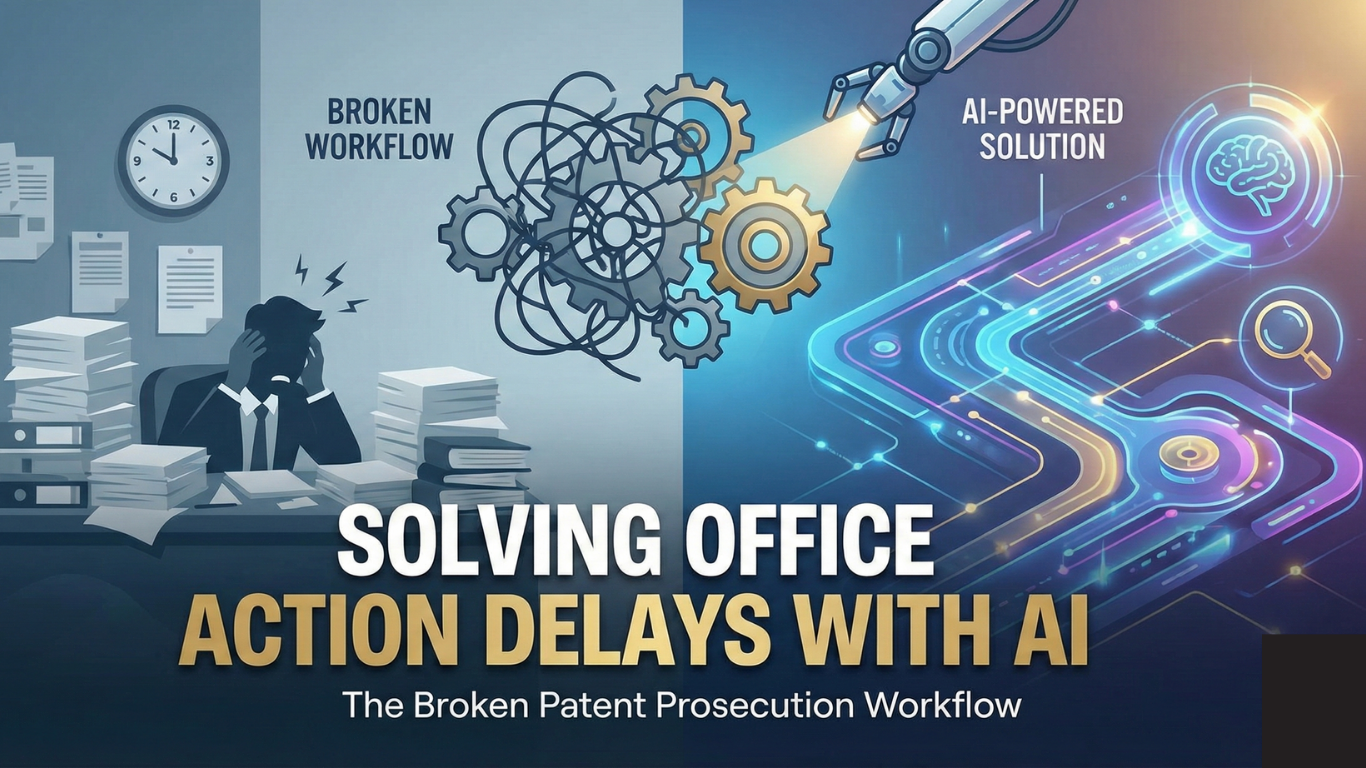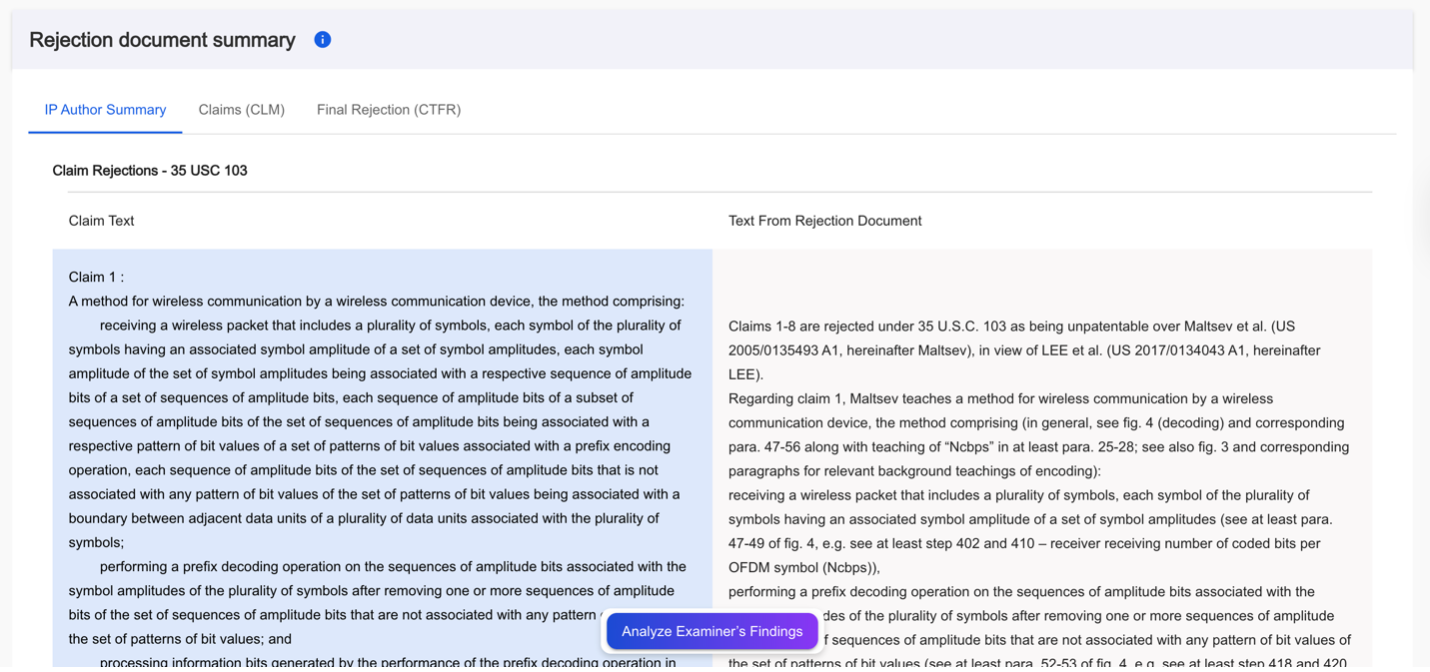
December 12, 2025
As a practitioner, you understand the economic reality. The market has shifted very aggressively towards fixed fees, yet the USPTO Office Action process has not become simpler. In fact, it is becoming more complex.
When you agree to a flat fee for responding to Office Actions, you are effectively gambling. You are relying on a routine rejection. Then, you look at the file and see a huge, multi-reference §103 rejection that requires heavy technical analysis and complex legal analysis. Suddenly, your effective hourly rate plummets. A response that will take four hours suddenly takes ten hours. The profit margin? Out the window.
The conventional patent prosecution workflow is functionally broken.
We witness attorneys with two decades of experience blowing billable hours on unbillable administrative busywork. You are manually OCRing PDFs. You are copy-pasting claim charts. You are searching for antecedent basis errors at 8:00 PM on a Tuesday.
This is not only inefficient. It is also a misallocation of high-value intellectual capital that leads to Office Action delays.
IP Author is not a replacement for the Patent Attorney. IP Author is a replacement for the friction that causes delays. We created the IP Author AI to reduce this administrative busy work by 70% so you can focus on the legal strategy that wins the patent.
Here is how the workflow will change with the right tools.
1. Stop Reading Boilerplate
Before you can even think about strategy, you have to deconstruct the dense layers of the USPTO Office Action. You spend your precious mental cycles distinguishing standard statutes from the actual patent examiner rejections.
IP Author AI transforms the Patent Office Action from a static document into structured data, eliminating the need to manually sift through pages of text. What IP Author does is:
- Instant Parsing: Simply drag and drop your CTNF/CTFR PDF file or enter the Application Number. Our parsing engine automatically segregates the text.
- The Dashboard: You have a visual representation of the entire landscape of law. We don’t just point out the key issues; we provide information on the entire range. You get immediate access to structured data for 35 U.S.C. §§ 101, 102, 103, and 112.
- Total Visibility: It doesn’t end with statutory rejections. We also analyze objections to claims, areas of allowable subject matter, and even the obligatory Non-Patent Literature (NPL) citations. You begin the work knowing what you are up against.
2. The “Side-by-Side” Solution
You are left with manually cross-referencing your Claim 1 with prior art citations, switching between screens to locate “Paragraph [0045].” This is generally the most painful step in the patent prosecution workflow.
IP Author deals with this problem using a clean, split-screen design.
- Visual Mapping: On the left side, you see your Examiner objections and rejected claims. On the right side, you see the exact text from the cited reference.
- Colour-Coded Assessment: We go one step further. The assessment instrument colour-codes the elements of claims, indicating them in Green (Fully Disclosed) or pink (Not Disclosed) on the basis of the Examiner’s interpretation.
- Deep Link Verification: You don’t have to trust the summary. You can click through to the source text to verify whether the reference actually teaches what the Examiner says it teaches. A missing element of a claim will take you minutes to identify.

3. Beating the Blank Page
The act of staring at a blinking cursor will kill efficiency. Even if you understand the strategy, writing the technical writing from scratch is a massive bottleneck in terms of Office Action response time.
We employ Automated Office Action drafting in order to assist with your writing, not replace your brain.
- Strategic Foundations: You never start from zero. The system analyses the rejection and proposes viable legal pathways, whether that is amending the specification or traversing directly. You select the strategy that fits your case, and the system lays the groundwork.
- Collaborative Refinement: Think of the tool as a highly capable junior associate. You guide the AI patent tools to refine the nuances, adjusting the focus or strengthening a distinction, generating a technically precise draft that is ready for your final polish.

4. The Safety Net
What annoys a client or a partner more than a Notice of Non-Compliant Amendment due to a dumb typo? An incorrect claim number or the lack of an antecedent basis can blow a perfectly legitimate filing. Think of these as unforced errors that burn non-billable time for claim amendments.
IP Author is your 24/7 Quality Control.
- Compliance Guardrails: Prior to downloading, the system checks for claim numbering, status indicators, and issues related to antecedent basis.
- Ready to File: The final product will be a formatted Word document ready for your firm’s letterhead.
The Bottom Line
We understand the risks involved. You must protect your clients’ confidential information. IP Author is designed with strong, enterprise-level security to support those responsibilities.
We don’t make the legal decisions. We make the legal decisions faster.
Cutting 70% of the administrative burden means you put an end to allowing Office Action delays to run your life and turn a break-even fixed-fee case back into a profitable one.
Ready to see what your practice will look like with a 70% efficiency gain?
Experience unmatched efficiency and accuracy with IP Author, your essential partner in patent law. Want to see IP Author in action? Book a demo call with one of our experts today.